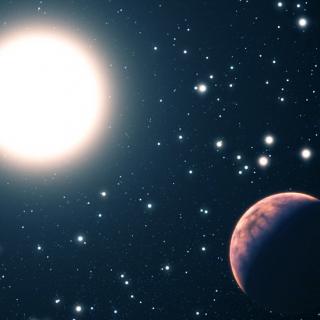Bibcode
Adibekyan, V. Zh.; Delgado Mena, E.; Sousa, S. G.; Santos, N. C.; Israelian, G.; González-Hernández, J. I.; Mayor, M.; Hakobyan, A. A.
Referencia bibliográfica
Astronomy and Astrophysics, Volume 547, id.A36, 5 pp.
Fecha de publicación:
11
2012
Revista
Número de citas
108
Número de citas referidas
97
Descripción
Recent studies have shown that at low metallicities Doppler-detected
planet-hosting stars tend to have high α-content and to belong to
the thick disk. We used the reconnaissance spectra of 87 Kepler planet
candidates and data available from the HARPS planet search survey to
explore this phenomenon. Using the traditional spectroscopic abundance
analysis methods, we derived Ti, Ca, and Cr abundances for the Kepler
stars. In the metallicity region -0.65 < [Fe/H] < -0.3 dex, the
fraction of Ti-enhanced thick-disk HARPS planet harboring stars is 12.3
± 4.1%, and for their thin-disk counterparts this fraction is 2.2
± 1.3%. Binomial statistics give a probability of 0.008 that this
could have occurred by chance. Combining the two samples (HARPS and
Kepler) reinforces the significance of this result (P ~ 99.97%). Since
most of these stars harbor small sized or low-mass planets we can assume
that, although terrestrial planets can be found in a low-iron regime,
they are mostly enhanced by α-elements. This implies that early
formation of rocky planets could start in the Galactic thick disk, where
the chemical conditions for their formation are more favorable.
Table with chemical abundances is only available at the CDS via
anonymous ftp to cdsarc.u-strasbg.fr (130.79.128.5) or via http://cdsarc.u-strasbg.fr/viz-bin/qcat?J/A+A/547/A36
Proyectos relacionados

Pruebas Observacionales de los Procesos de Nucleosíntesis en el Universo
Recientemente se han llevado a cabo varios análisis espectroscópicos de estrellas con planetas. Uno de los resultados más relevantes ha sido descubrir que las estrellas con planetas son en promedio más metálicas que las estrellas del mismo tipo espectral sin planetas conocidos (Santos, Israelian & Mayor 2001, A&A, 373, 1019; 2004, A&A, 415, 1153)
Garik
Israelian